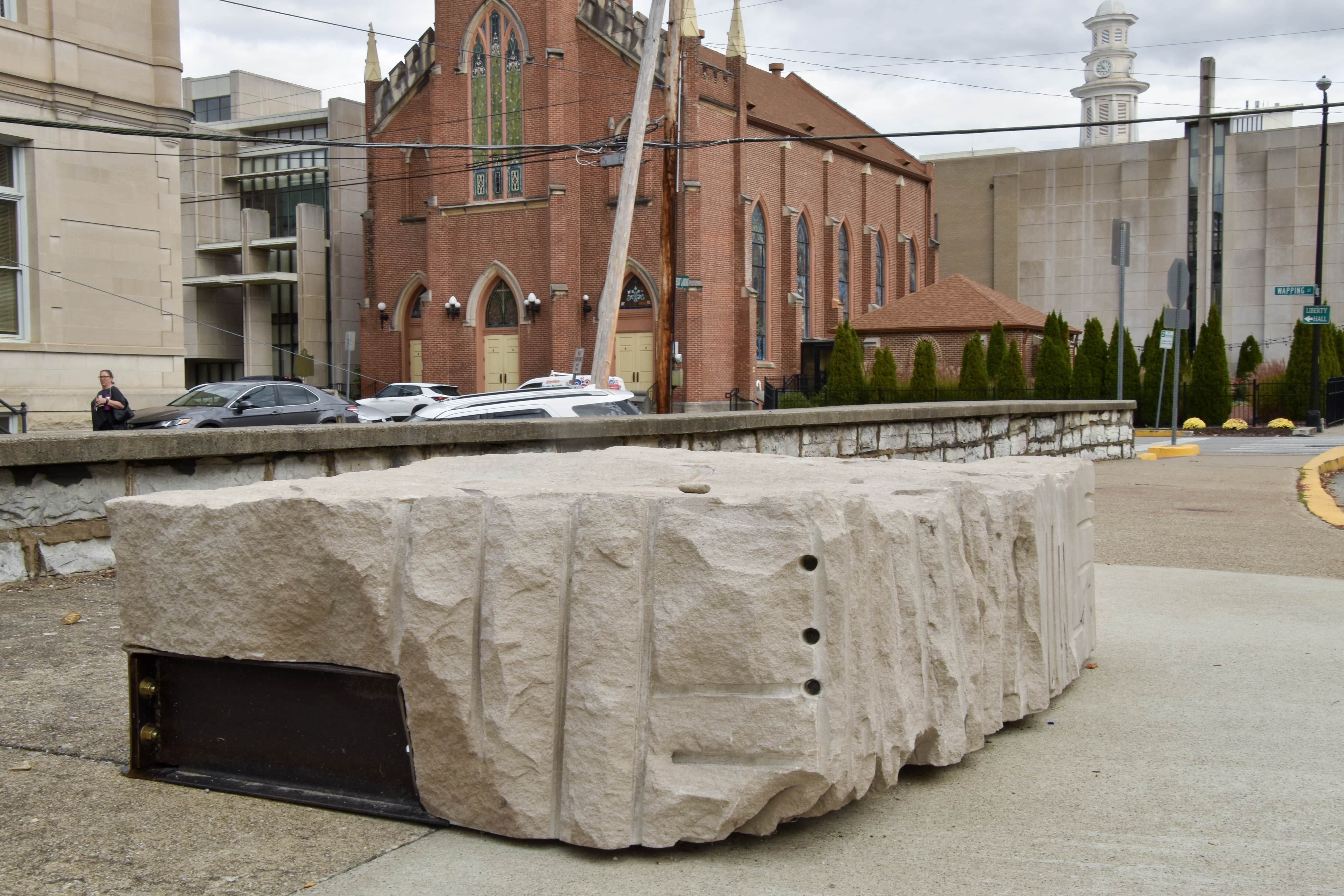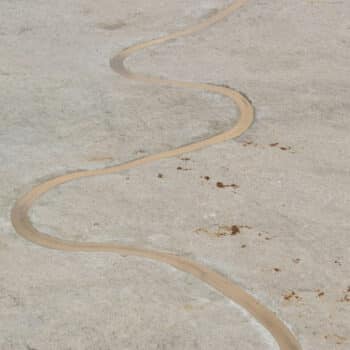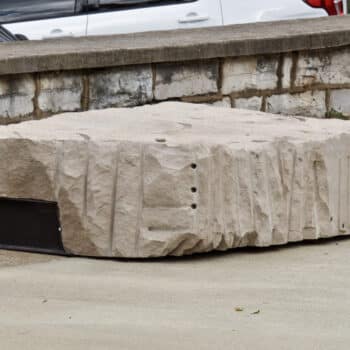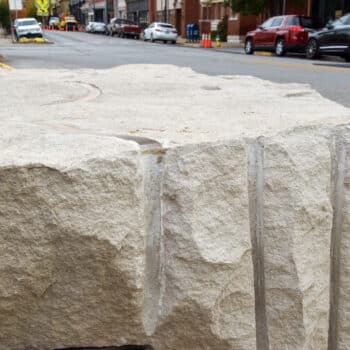Formed from a block of Indiana limestone, the solidity and strength of stone serves as a testament to resilience and endurance in the face of racial terrorism. The sinuous bronze inlay represents the Kentucky River as it flows through Frankfort, and serves as a symbolic crack expressing the divisiveness of racism. The steel I-beam notched into the side is a nod to the nearby Singing Bridge, built in 1893.
The Singing Bridge, built in 1893, is a two-lane vehicle and pedestrian truss bridge that connects the South Frankfort and Downtown Frankfort neighborhoods over the Kentucky River. It received its name because of the humming sound it makes when cars drive over the open-grate steel. The bridge is also the historic site of at least two racial terror lynchings in Franklin County: the victims were Marshall Boston in 1894 and John Maxey in 1909, both Black men from the Frankfort community.
During the period between the Civil War and World War II, thousands of African Americans were lynched in the United States, many in Kentucky. Lynchings were violent and public acts of torture, largely tolerated by state and federal officials. These lynchings created long-lasting terror and trauma. As a community, Frankfort has been engaged in active community remembrance work in partnership with the Equal Justice Initiative. A historical marker memorializing Marshall Boston and John Maxey was installed at this site in October 2022. The bench offers a space for conversation, truth-telling and reflection about racial terrorism and its legacy.
This sculpture was commissioned by the City of Frankfort in partnership with Josephine Sculpture Park and Focus on Race Relations: Frankfort, with federal funding from the National Endowment for the Arts.



